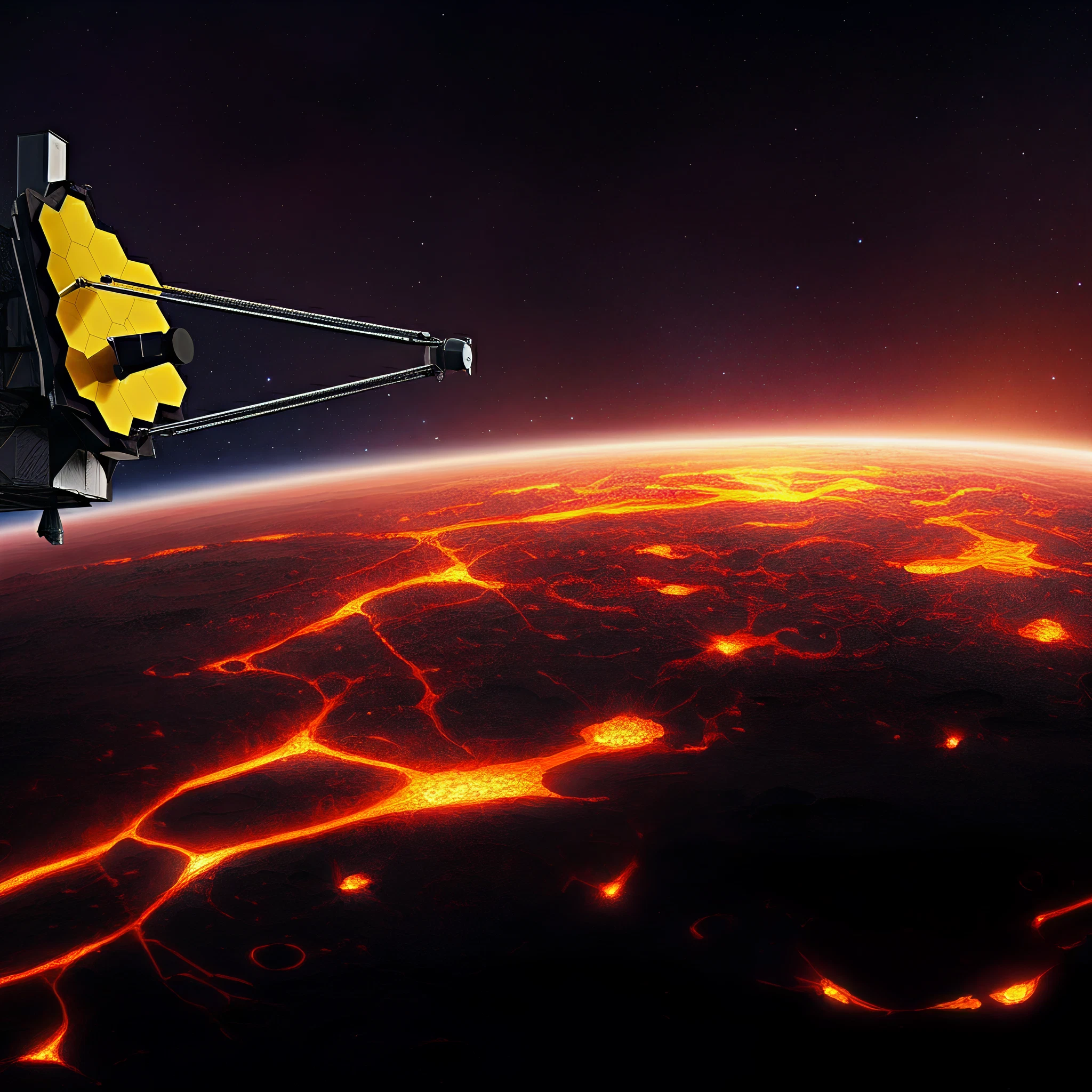The universe is vast, mysterious, and full of possibilities. Thanks to groundbreaking advancements like NASA’s James Webb Space Telescope (JWST), we can now explore the cosmos in ways we never imagined. One of Webb’s latest and most enthralling discoveries is the detailed observation of the exoplanet TOI-421 b, an alien world with an atmosphere that could forever change our understanding of planetary systems. Let’s explore how this milestone has reshaped our approach to studying extraterrestrial environments and what it means for the search for life beyond Earth.
The James Webb Space Telescope: A New Era in Space Exploration
Launched to replace the iconic Hubble Space Telescope, the James Webb Space Telescope offers unprecedented capabilities for observing distant galaxies, stars, and planets. With cutting-edge infrared imaging and spectroscopy, Webb’s mission is to peer deeper into the universe and uncover the secrets of its formation. The telescope is particularly adept at studying exoplanets, providing detailed insights into their atmospheres, compositions, and potential for hosting life.
The Discovery of TOI-421 b
One of Webb’s most impressive recent feats is the observation of TOI-421 b, a sub-Neptune exoplanet. Discovered orbiting a Sun-like star, TOI-421 b has a surface temperature of approximately 1,340°F (727°C). What sets this planet apart is its rare, clear atmosphere, largely free from clouds and haze, offering scientists a remarkable opportunity to study its chemical composition in detail.
Atmospheric Insight
Webb’s advanced spectroscopic tools revealed a hydrogen-rich atmosphere with traces of water vapor, carbon monoxide, and sulfur dioxide. Surprisingly absent were methane and carbon dioxide, challenging long-standing assumptions about atmospheric compositions on planets of this type. These findings suggest TOI-421 b likely had a unique formation and evolutionary history. Unlike previously studied sub-Neptunes with hazy atmospheres, TOI-421 b shines as a crystal-clear window into the mysteries of alien worlds.
How Webb’s Technology Made It Possible
Until now, studying sub-Neptune exoplanets was hindered by their faint signals and cloud-covered atmospheres. Webb’s unparalleled sensitivity to infrared light made it possible to detect even the most subtle chemical fingerprints. Its ability to capture a detailed transmission spectrum ensured the team could analyze TOI-421 b’s atmosphere comprehensively, breaking barriers that other telescopes, such as Kepler, could not.
With a clear view, Webb revealed what other observatories could not capture, showcasing its revolutionary role in the field of astrophysics.
Implications for the Search for Life
The discovery of TOI-421 b is a major milestone in the search for extraterrestrial life. The clear atmosphere allows scientists to determine not just the planet’s composition but also how it interacts with its star. While TOI-421 b itself is likely far too hot to support life as we know it, the findings open new possibilities for understanding how environments that could host life might form elsewhere in the universe.
This discovery also highlights the importance of studying smaller, rocky planets and moons that could host liquid water, as TOI-421 b demonstrates the potential for diverse atmospheric conditions even on planets outside the habitable zone.
What’s Next for Research?
The next step involves studying more sub-Neptunes in similar temperature ranges to determine if TOI-421 b is an anomaly or part of a wider trend. Webb’s continued observations will focus on identifying atmospheric patterns in planets with clear skies, refining theories about their formation and evolution. Additionally, scientists aim to observe planets within the habitable zones of their stars, where conditions may allow liquid water to exist, potentially increasing the likelihood of finding habitable environments.
Future collaborations with upcoming missions, such as the European Space Agency’s ARIEL (Atmospheric Remote-sensing Infrared Exoplanet Large-survey) mission, will complement Webb’s capabilities and offer even greater insights into exoplanet diversity.
A Paradigm Shift in Space Exploration
TOI-421 b’s discovery is a resounding affirmation of why continued investment in space exploration is crucial. It not only enhances our understanding of the universe but also inspires humanity to look beyond Earth for answers to age-old questions. Are we alone? What conditions are necessary for life to thrive? Webb’s discoveries suggest we are closer than ever to uncovering answers.
The Webb Telescope stands as a testament to human ingenuity and commitment to expanding the boundaries of scientific understanding. With every new discovery, we further illuminate the complexity and wonder of the universe we inhabit.
Final Thoughts
TOI-421 b serves as a reminder of how much we stand to learn from the cosmos. From its hydrogen-rich atmosphere to its Sun-like star, this alien world captures both our imagination and scientific curiosity. And this is just the beginning. With Webb observing more exoplanets every day, the universe continues to reveal its secrets, one planet at a time.
The future of space exploration shines bright, thanks to innovations like Webb. And who knows? One day, we may find an alien world that feels just a little like home.








